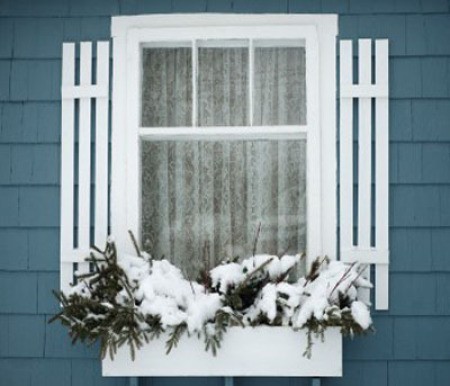
Once January 1st rolls around, millions of Americans find themselves looking for a way to dispose of their Christmas trees. Although most communities offer curbside Christmas tree recycling program, there are also some great ways to put your post holiday tree to work for you in the garden.
Pine boughs are a great way to protect sensitive plants during the winter months. Evergreen perennials, less hardy perennials, or perennials that were planted in mid- to late fall, can all benefit with some extra mulching to help them through the winter. Spread the boughs over the plants at least two layers thick. This will protect them from drying winds and help stabilize soil temperatures, reducing the risk of frost heave.
Pine boughs are also an attractive way to protect plants on trellises and arbors from drying winds. Use twine or zip ties to hold them in place over climbing roses, grape vines, bittersweet, or clematis.
Pine boughs should be removed in the spring after the danger of severe weather has past. Once temperatures begin to warm up and the tips of early bloomers like crocus or snowdrops start to push through, it's time to collect them from the garden. Since most of your plants will still be under an additional layer of protective mulch, its important to remove the pine boughs to allow the soil to warm and increase the air circulation around your plants.
Another great way to recycle your tree is to cut the branches down to size and add them to your window boxes. Using the pine boughs as your base, add in some rose hips, birch twigs, or boxwood to fill in and create texture. Bits of preserved reindeer moss will add a pop of citrus green. To add some warmth, nest (or wire) in some large, sugar pine cones and a few pheasant feathers. Finish the arrangement off with a few pearl holiday ornaments (unbreakable) or white lights, and some winter ribbon. Voila! Beautiful window boxes to transition you through until spring.
During a sudden January thaw, toss pine boughs onto sidewalks and walkways and let them freeze into the ice. Not only will they provide you with some good traction (and a pleasant scent), but also with an eco-friendly alternative to rock salt. Just make sure you leave your shoes at the door after walking over them, or you will gum up your floors with pine sap.
Recycle your Christmas tree whole, by placing it in the garden or backyard and using it as a bird feeder. First, make sure the tree is free from Christmas decorations, ornament hooks, garland, and tinsel. Then take florists wire and a large gauge needle to string some edible garland made from fresh apple, orange, and pear slices, cranberries, peanuts in the shell, popcorn, and pine cones covered in peanut butter and birdseed. Birds will flock to your tree to nibble at the garland or take cover in the branches.

About The Author: Ellen Brown is an environmental writer and photographer and the owner of Sustainable Media, an environmental media company that specializes in helping businesses and organizations promote eco-friendly products and services.
Add your voice! Click below to comment. ThriftyFun is powered by your wisdom!
Thank you for sharing this valuable information. I posted the link to my FaceBook page so that maybe some more people will think twice before tossing their tree on the curb.
We have 3 large lakes in our area, and the city provides a place to drop off your discarded Christmas trees. Then, they are taken to the lakes and put in the water for the fish to use for cover when they are nesting in the spring.
Add your voice! Click below to comment. ThriftyFun is powered by your wisdom!